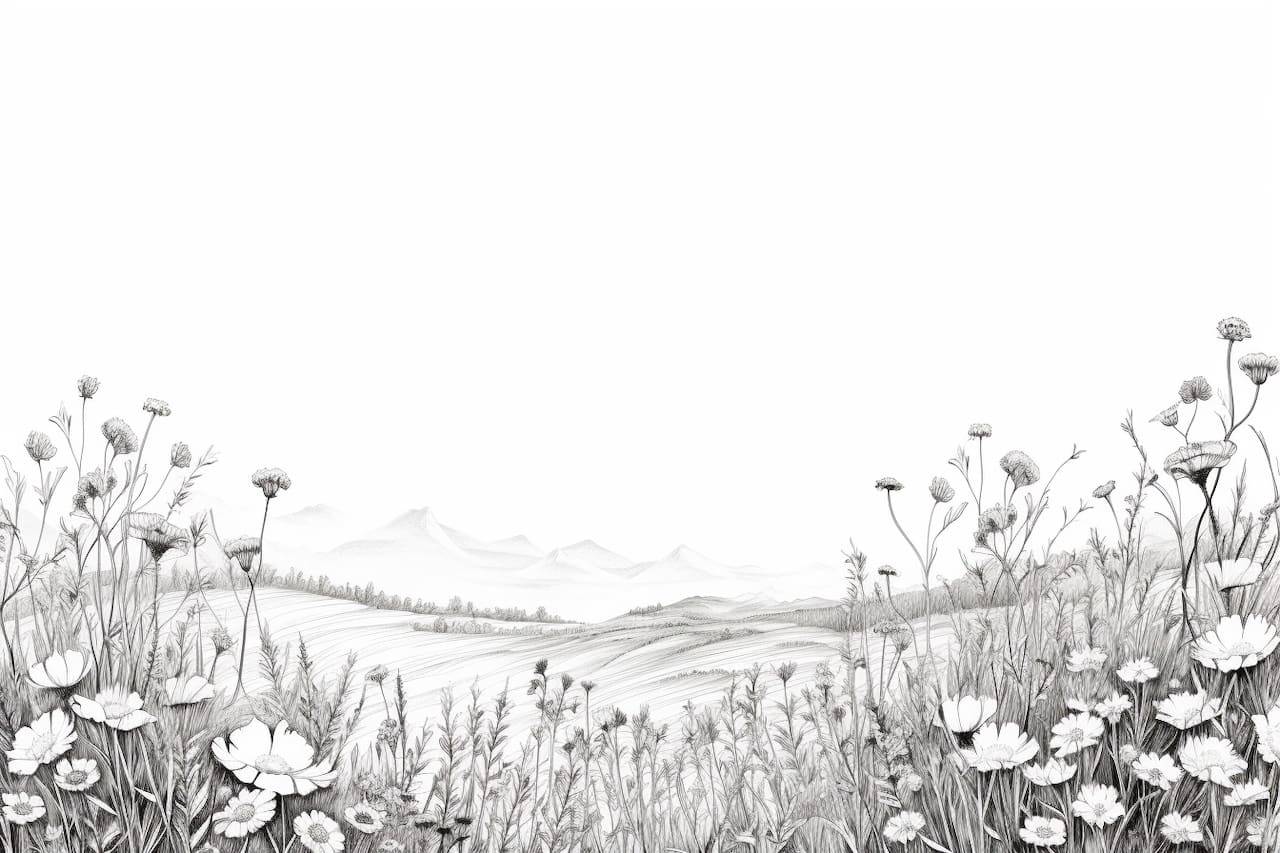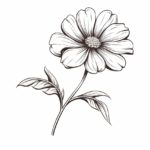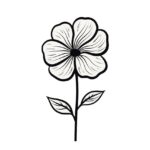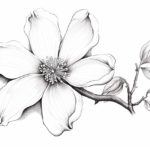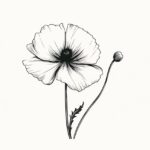Welcome! In this step-by-step guide, I will show you how to draw a beautiful flower field. Whether you are a seasoned artist or just starting out, this tutorial will help you create a vibrant and lively scene. By following these instructions and using some basic materials, you will soon be able to capture the essence of a blooming flower field on paper.
Materials Required
Before we begin, let’s gather the materials you will need:
- Drawing paper: Select a smooth and sturdy paper suitable for your preferred drawing medium.
- Pencils: Have a range of pencils with different levels of hardness, such as 2B, 4B, and 6B.
- Eraser: Choose a soft, non-abrasive eraser that won’t damage the paper.
- Colored pencils or markers (optional): If you wish to add color to your drawing, have some colored pencils or markers on hand.
Now that you have everything you need, let’s get started on our flower field drawing!
Step 1: Sketch the Horizon Line
Begin by lightly sketching a horizontal line across your paper. This line will represent the horizon and will serve as a reference point throughout the drawing process. Draw this line slightly above the center of the paper.
Step 2: Outline the Background
Using a light pencil, start outlining the background of the flower field. Imagine the field extending beyond the horizon line. Create loose, curving lines to indicate the rolling hills and slopes of the landscape. Keep the lines light and fluid, allowing the shapes to flow naturally.
Step 3: Add Flowers in the Distance
Next, add some distant flowers to create depth in your drawing. These flowers will be smaller and less detailed than the ones in the foreground. Use simple shapes, such as circles or ovals, to represent the flower heads. Scatter them across the background, following the contours of the hills.
Step 4: Draw the Foreground Flowers
Now, let’s focus on the foreground flowers. Draw larger flower shapes in the front of your field. These can vary in size, shape, and type. Consider including flowers like daisies, tulips, or sunflowers. Use basic shapes as a starting point and gradually add details to each flower.
Step 5: Add Stems and Leaves
Extend the flower shapes with stems and leaves. Draw the stems coming from the bottom of each flower, leading to the ground. Add simple, elongated ovals for the leaves along the stems. Vary the angles and directions of the stems and leaves for a more organic and natural look.
Step 6: Detail the Flowers
Now it’s time to add more details to the flowers. Start by adding petals to each flower head. Pay attention to the shape and texture of the petals, and make them overlap slightly for a realistic effect. Experiment with different petal shapes and sizes to create variety in your flower field.
Step 7: Enhance the Background
To make the background more interesting, add a few scattered trees or bushes. These elements will add depth and provide contrast to the flower field. Keep them simple and use basic shapes to represent their forms.
Step 8: Define the Horizon Line
Darken and define the horizon line by tracing over it with a darker pencil. This will make the line more prominent and give a clear reference point for the rest of the drawing.
Step 9: Choose Your Color Palette (Optional)
If you wish to add color to your drawing, now is the time to choose your color palette. Consider using soft pastel shades to capture the delicate and vibrant nature of the flowers. Alternatively, you can go bold with bright and contrasting colors. Experiment with different combinations to find the look that suits your vision.
Step 10: Add Color to Your Drawing (Optional)
If you have decided to add color, use your colored pencils or markers to carefully fill in the flowers and any other elements you want to highlight. Take your time and layer the colors to achieve depth and dimension. Blend the colors smoothly for a seamless and natural appearance.
Conclusion
Congratulations! You have successfully learned how to draw a flower field. By following these step-by-step instructions, you can create your own vibrant and lively scene on paper. Whether you choose to stick to black and white or add a burst of color, let your creativity bloom as you bring your flower field to life.
Remember, practice makes perfect. Don’t be afraid to experiment with different techniques and styles to develop your own unique approach to drawing flower fields. Enjoy the process and have fun!

